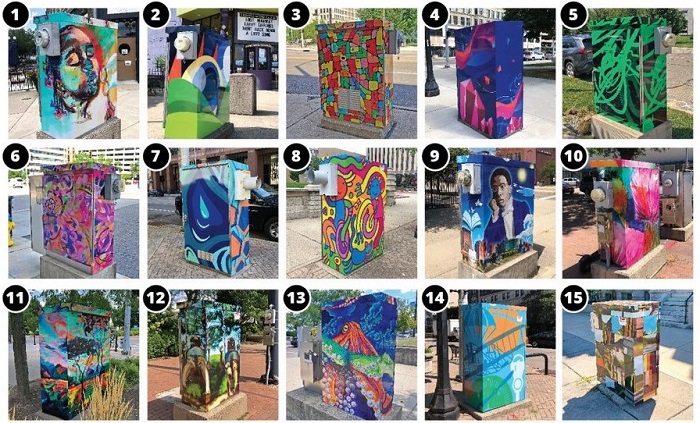A couple weeks ago, I caught a story on NPR about a temporary monument exhibit that has been placed on the National Mall in Washington, DC. While a little more permanent than a pop-up exhibit, it is only meant to appear on the Mall for a limited time. The project, Beyond Granite, was initiated by Monument Lab which commissioned six artists “.…to think about histories that haven’t been commemorated by the Mall and to look to moments when the Mall was charged by people, not statues.”
One of the pieces is a playground inspired by a picture of a Baltimore playground taken a few days after it was segregated showing black and white children playing together. Young visitors are able to play on the equipment which comprises the piece.
Another is a piece commemorating Marian Anderson’s 1939 Easter Day concert on the steps of the Lincoln Memorial after she was prohibited from performing in Constitution Hall because she was Black.
The piece that caught my ear was “Let Freedom Ring,” that plays “My Country Tis of Thee,” a song Anderson sang in her concert. The installation plays all but the last note leaving a bystander to step forward and pull a lever to complete the song.
“The piece is simply saying, America is not America without you as an active citizen,” Ramírez Jonas says. “It needs you in some way.”
Doing a little more research, I discovered the sculptor, Paul Ramírez Jonas, is chair of the Art Department at Cornell University. An article on Cornell’s website provided more information on the philosophy behind the piece and the bystander’s role.
Before participants pull the lever to ring the last bell measuring more than two feet tall and wide, Ramírez Jonas asks them to declare why they are doing it: Are they celebrating “freedom to” do something, or “freedom from” something? They can preserve their choice in a graphite rubbing of one of those two prompts, inscribed on opposite sides of the bell.
“I’m not telling you what your idea of freedom is,” Ramírez Jonas said. “I’m just suggesting that there’s flexibility, that there’s room for inserting yourself.”
Another inscription shows the song’s first verse with selected words missing, inviting participants to modify the lyrics – as Anderson did when she sang “our country” instead of “my country,” and “we sing” instead of “I sing.”
The process of “pulling together,” Ramírez Jonas said, occurs through awareness of others’ expressions of freedom and a sense of collective responsibility. Reflecting a bias toward optimism, Ramírez Jonas said, he never contemplated a design that might have rendered “America” unable to be completed.
“The bell works,” he said, “but it needs you.”
Reading a Bloomberg article on the project, I became aware of another piece by Wendy Red Star, an Apsáalooke (Crow) artist. It features an enlarged version of the artist’s thumbprint encased in glass and outlined in red soil. The names of 50 Crow leaders who signed agreements with the US government, often by using their thumbprints. The name of the piece, “The Soil You See…” comes from the words of one of the few survivors of Battle of Little Bighorn
“The soil you see is not ordinary soil — it is the dust of the blood, the flesh and bones of our ancestors. . . . You will have to dig down through the surface before you can find nature’s earth as the upper portion is Crow.”



Santa Cruz Shakespeare has several tiers of benefits for donors/members. Some, like season-announcement parties, are open to several tiers. Some,…